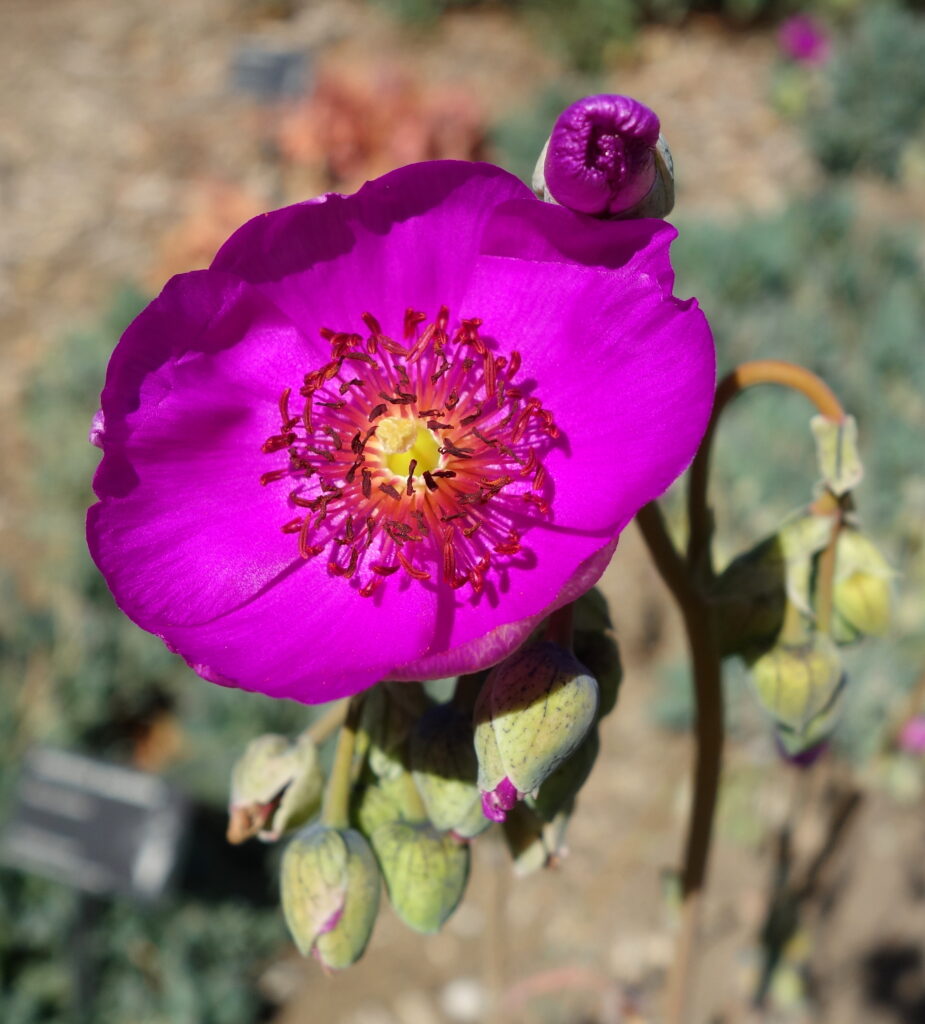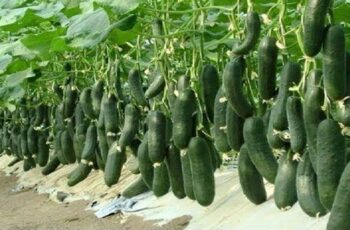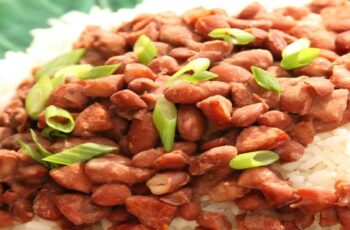Ad Blocker Detected
Our website is made possible by displaying online advertisements to our visitors. Please consider supporting us by disabling your ad blocker.
Unique-looking succulents can make your rooms look better, also, they are low-maintenance and the easiest plants to grow. Check out the 17 best indoor succulents for your home!
Some succulents can bear colorful and gorgeous flowers too! This post will let you know lovely flowering succulents that you may want to get.
Not a lot of people know that succulents can also bear flowers. Well, at least some succulents could.
This is why people don’t really think of succulents when they want to have a garden filled with flowers. What you should know is that succulents are not just about fleshy leaves.
A flowering succulent can blossom at any time of the year. Well, this really depends on the type of succulent that you have.
What I really would like about getting a flowering succulent to add more colors to my garden is its low maintenance.
Admit it! It’s a bit hard to make sure that any flowering plants would actually blossom.
You really need to make sure that you let these succulents sit on well-draining soil and never on the moist potting mixture.
17 Gorgeous Flowering Succulents For Adding Colour To Your Garden
Without further ado, here is a list of the 17 best flowering succulents to grow indoors & outdoors. I’ll also let you know what you need to know about them.
1. Aloe Vera (Medicinal Aloe)

Aloe Vera is a well-known plant for its medicinal uses. It’s named the wonder plant because it doesn’t just have one or two medicinal purposes.
It has many benefits, and you probably know this plant because many products like shampoos and beauty essentials have this as a key ingredient.
Aside from the many ways you can use this, this plant is visually appealing. It looks like a big zebra plant, but it’s chunkier and is mostly grayish-green in color.
It has small spikes that line its leaves, and it could grow up to 40 inches tall.
The appearance of the Aloe Vera flowers differs and depends on their species.
There are about 500 known Aloe Vera species out there, and the colors of its flowers are mostly red and yellow.
Its flowers stick out from the middle and look spikey in appearance.
Its gorgeous flowers only bloom once a plant is 4 years of age. It may take longer for its flowers to appear, but once you see them bloom, it could add interesting hues of colors to your garden.
To make sure that your Aloe Vera plant blooms, make sure that they get full sun exposure.
Yes, you can place your Aloe Vera plant indoors, but this won’t encourage flowering. You’ll need to take it out now and then, especially during summer.
Specifications
- Origin: Africa and Mediterranean Countries
- Hardiness: Thrives well in zones 10 and 11
- Light requirement: partial to full sunlight
- Watering: Allow 2 to 3 inches of the top of its soil to completely dry out before watering. You should be watering Aloe Vera every three weeks, depending on the weather.
- Problems: This plant is susceptible to mealy bugs and other pests like scale. It’s also prone to root and soft rot when it is overwatered.
2. Echeveria

The Echeveria plants have to be one of the most popular succulents with purple flowers. A lot of people find this attractive because of its rosette-forming leaves. There are at least 100 species of this plant that are mostly different in color.
Some Echeveria plants are colored bright green, grayish-green, yellow, dark purple, and also red.
A clump of this plant alone is already striking and would add an appeal to your garden. When its flowers blossom, it becomes more aesthetically pleasing.
Speaking of its flowers, these indoor flowering succulents are mostly coral pink in color with yellowish and reddish tips. They rise with a greenish arching stem and appear to be bell-shaped, and have aster-like petals. Its flowers also appear a bit fleshy, and they are simply hard to miss.
To trigger the flowering stage, make sure this plant is exposed to full sunlight. It prefers intense lighting if you want Echeveria plants to bloom.
Specifications
- Origin: Mexico and South America
- Hardiness: Thrives great in zones 9 to 11
- Light requirement: bright and full sunlight
- Watering: How often this plant should be watered really depends on the weather. It is drought-tolerant and can last up to 12 weeks with no watering. What’s best is to wait for its oil to be rough and dry before you water this plant again.
- Problems: It could easily get overwatered which would lead to root and soft rot. It easily wilts when it is both over and under-watered. Typically, an overwatered echeveria looks mushy in appearance.
3. Euphorbia Milii (Crown Of Thorns)
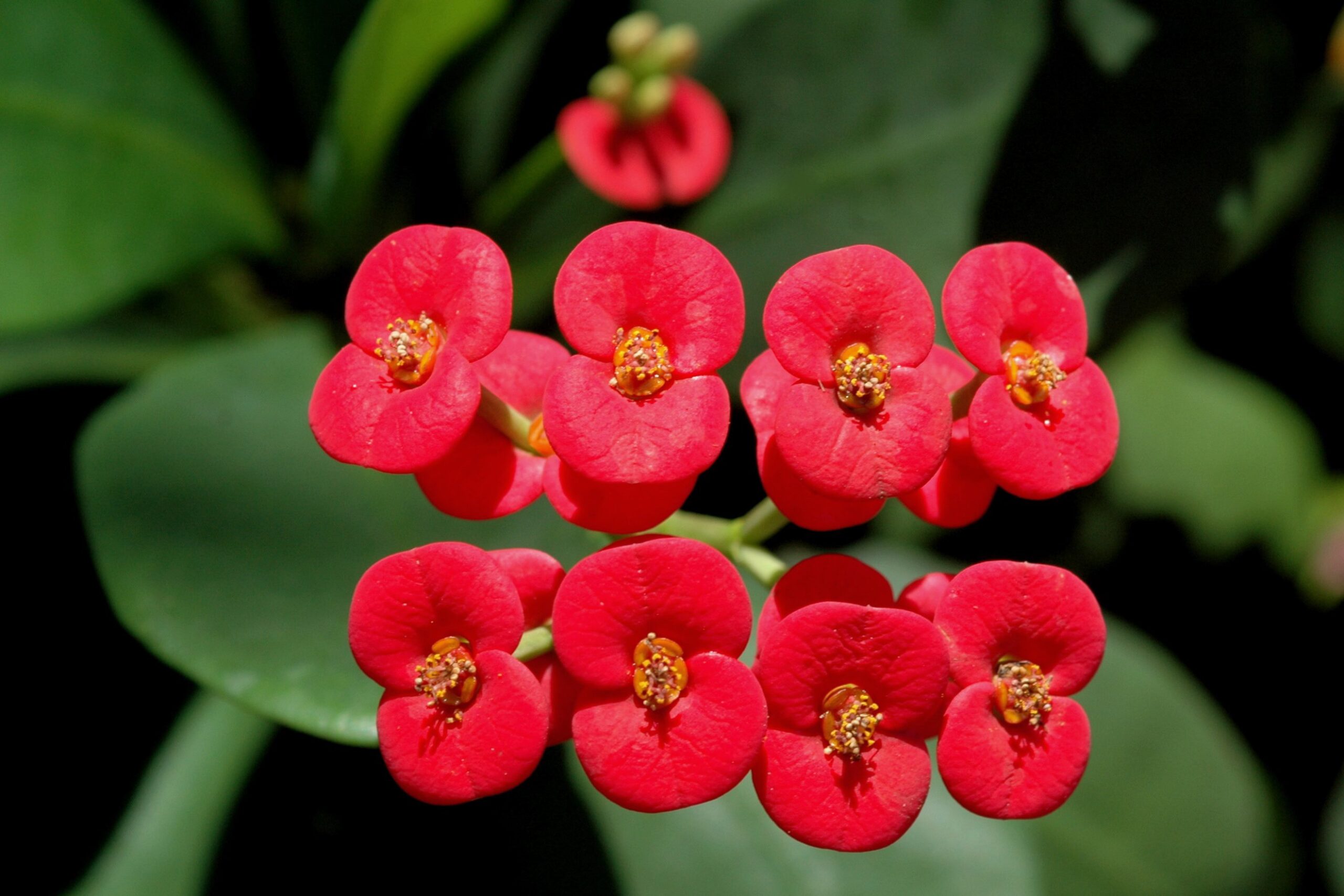
Euphorbia Milii
This perennial outdoor flowering succulent got its name because it is believed that Jesus Christ was wearing a crown made of thorns from the stem of this plant. This is just one of the few woody shrub succulents that can be grown indoors.
This plant can grow up to six feet tall when grown outdoors. If you’ll take this as a house plant, the most it could grow to is around two feet tall. It can be propagated by cutting its tips.
The wood stem of this plant is full of sharp blackthorns on its main branches, while its leaves are bright green in color.
It can flower year-round, but it’s more likely to blossom during winter. Its flowers are typically pinkish-white in color with green centers.
Some varieties would have white, yellow, and orange similar-looking flowers. To promote blossoming, it’s best to have it exposed to the sun.
Specifications
- Origin: Madagascar
- Hardiness: This is perennial in USDA Hardiness Zones 9 to 11
- Light Requirement: It would thrive well with at least 3 hours of direct sunlight every day
- Watering: Only water its soil when at least an inch of its top already feels dry. Never let it sit on wet soil for a long time.
- Problems: All parts of this plant are completely toxic when ingested. When overwatered, it can easily suffer from root rot.
4. Calandrinia Spectabilis (Rock Purslane)
The Rock Purslane is a shrubby and perennial succulent known for its bright purple and pink flowers. Its leaves are bluish-green in color.
It is ideal to have in rock gardens. This plant can grow up to 18 inches tall and grow in areas with hot temperatures.
This, as a perennial plant, has a short life span. It can grow in any soil- from potting mixes to regular soil.
What’s important is that it is well-draining. Its flowers can bloom from spring to fall. The flowers look like poppy blooms and can easily attract bees and butterflies.
Specifications
- Origin: Native to Australia, North America, and Chile
- Hardiness: Grows in USDA Hardiness Zones 8 and above
- Light requirement: The rock purslane requires full shade and would need at least 4 hours of light exposure per day
- Watering: It doesn’t require much watering as it is drought-tolerant.
- Problems: This plant is toxic to pets.
5. Conophytum Calculus (Marble Buttons)
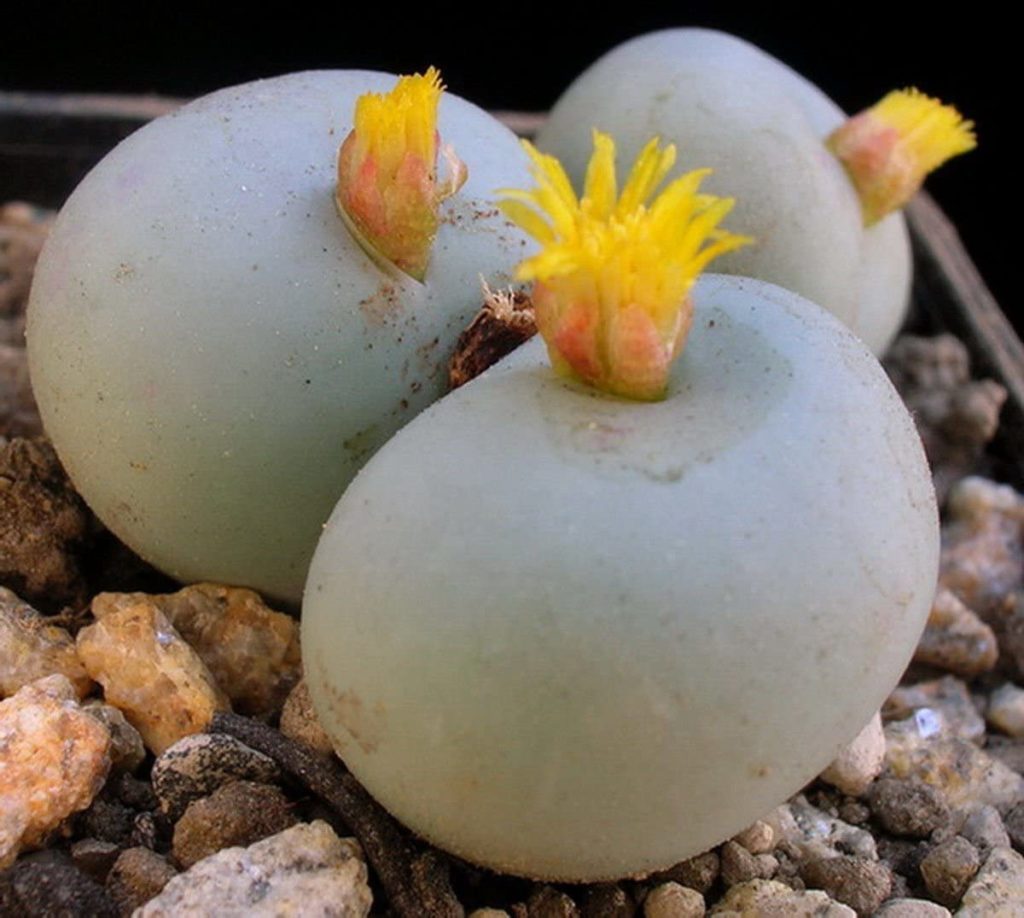
This yellow flowering succulent is a stemless succulent known for its round individual leaves. True to its name, its leaves appear to be small to medium-sized marbles that are green in color.
Its leaves’ texture is smooth and could grow up to 1.2 inches in diameter.
When a leaf of this plant dies, a new one emerges. It’s because the new or baby leaf grows inside an old leaf. It takes about a year before a leaf dies.
When it does, it will look thin, dry, and wilted. A healthy leaf will appear like a small cushion.
It blossoms during autumn. It emerges on top of its dome-like leaves, making the flower seem like a crown.
Its flowers are golden yellow and dark orange in color. You’ll only see its flowers open during the night as it is nocturnal.
It’s best to grow this plant in a dish garden so it could spread freely. It will do fine in both cold and hot weather. Just make sure that its soil is well-draining.
Specifications
- Origin: Regions of Cape provinces in South Africa and Southern Namibia
- Hardiness: It can thrive healthily in zone 6 to 9
- Light Requirement: This will need partial to full sun exposure. It needs at least 4 to 6 hours of sun daily.
- Watering: This plant doesn’t require much watering. Only water if its topsoil is already completely dry.
- Problems: Prone to root rot when it’s overwatered.
